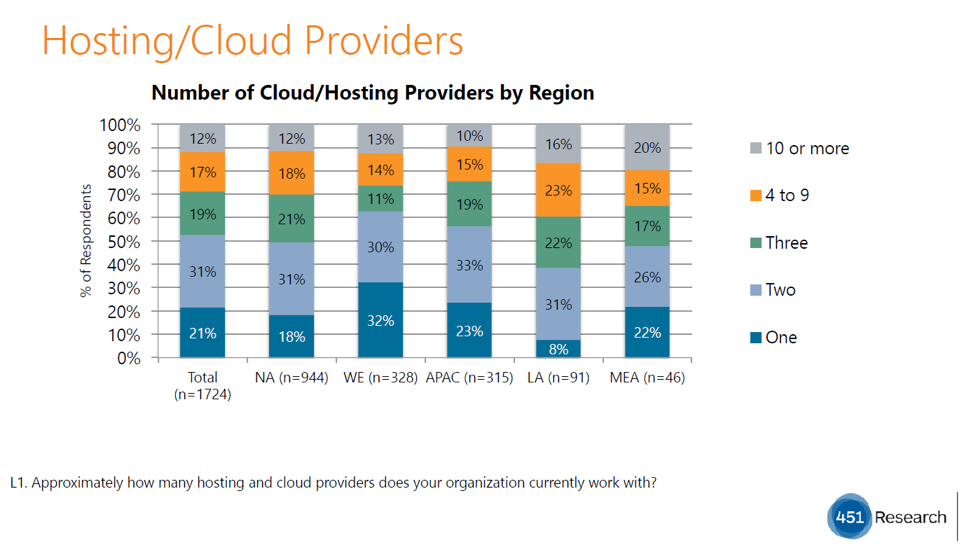
Amazon Web Services (AWS), Azure, and Google Cloud Platform (GCP) are the public cloud market leaders, but how do you determine which of them best supports the specific needs of your enterprise? For a majority of enterprises, and for the foreseeable future, it’s going to be a multiple answer question.
Gartner predicts that “…A multicloud strategy will become the common strategy for 70% of enterprises by 2019.”
Considering that multicloud accounts for less than 10% of enterprises today (according to the same report), that would mark a significant increase of adoption in a very short time, even by fast-paced technology standards. However, according to a recent study by Microsoft and 451 Research, nearly a third of organizations already work with four or more cloud vendors.

So, the evidence is there. The experts are predicting it. How did we get here? It starts with one of the oldest myths about cloud computing: “We need one cloud strategy or vendor.” That’s not necessarily true.
On the one hand, it can be argued that working with one vendor simplifies your work, since:
On the other hand though, your cloud attachment exposes you to a variety of issues, such as:
But as always, the most obvious point for not sticking with a single vendor for ANY service, is that the same service type from an alternative vendor might better suit your case – and cost less.
Of course, you should not diversify for diversity’s sake. If your strategy isn’t thought through, dealing with a bunch of different vendors could cause more headaches than it relieves. The same holds true for going to the cloud for cloud’s sake.
So, how do you know whether it’s time to diversify your cloud strategy? This is actually the simplest part of the whole process, as it essentially comes down to two main reasons:
For example, one of our clients underwent a 3+ year migration to AWS from on-premises. Five years later, they’re still enjoying a close relationship with the cloud provider and satisfied with the variety of services offered. Nevertheless, unexpected high bills and new requirements challenged the status quo.
New requirements dictated an Identity Cloud solution, as well as an API management platform. At the time, specific requirements to the solutions weren’t satisfied by AWS offerings. Luckily, Azure seemed to offer exactly what they needed.
The lesson? Your specific, evolving requirements, and business environment will drive your need for diversity.
A few years later, that same client once again reevaluated their needs, and it was clear that Azure Active Directory (AD) no longer supported their case, while Azure API management still served them well. So, they dropped Azure AD, but kept another service in Azure.
Already exposed to multicloud, the customer sought advice on unexpected high costs in AWS. We analyzed the case and compared it with alternative Azure architecture based on features, benefits, and cost. This comparison analysis highlighted current cloud inefficiencies, but also brought to light new opportunities to explore.
In the end, our customer was able to reduce costs by optimizing their current AWS architecture and negotiating price with AWS – backed up by comparable, alternative Azure architecture and cost.
Today they primarily use AWS, supplement with Azure, and are watching Google offerings very closely.
In summary: to optimize your cloud strategy, you must understand your specific needs first. Then, consider multicloud to reduce cloud cost and generate new opportunities.
Multicloud is a mindset, not a tactic. And it’s here to stay because it allows you pursue your business and technical goals rather than to comply to one offering, strategy, or existing vendor relationship. So, based on your needs, it might be time to start seeing other clouds.
Intrigued? To learn more, please reach out to Raymond Velez at rvelez@eastbanctech.com or 202-295-3015.